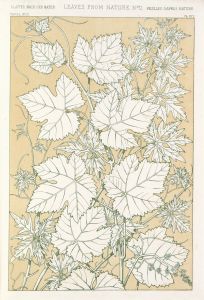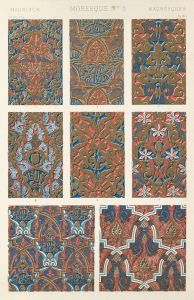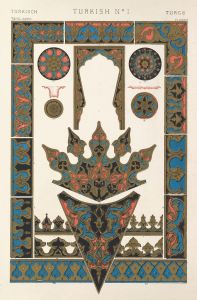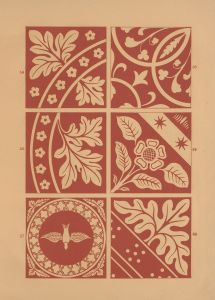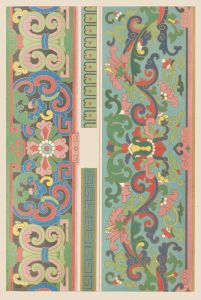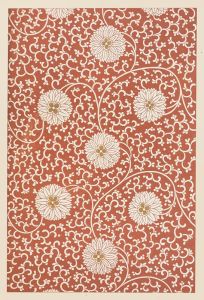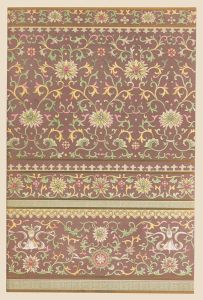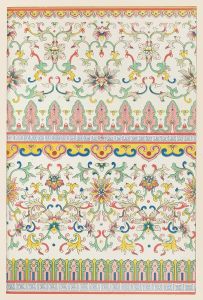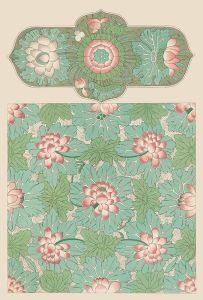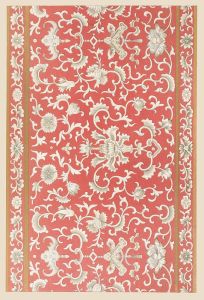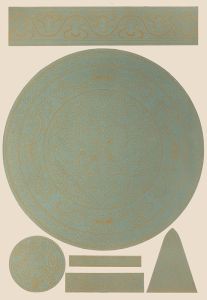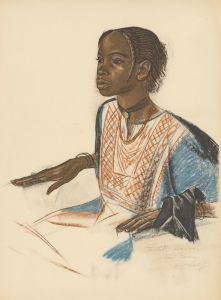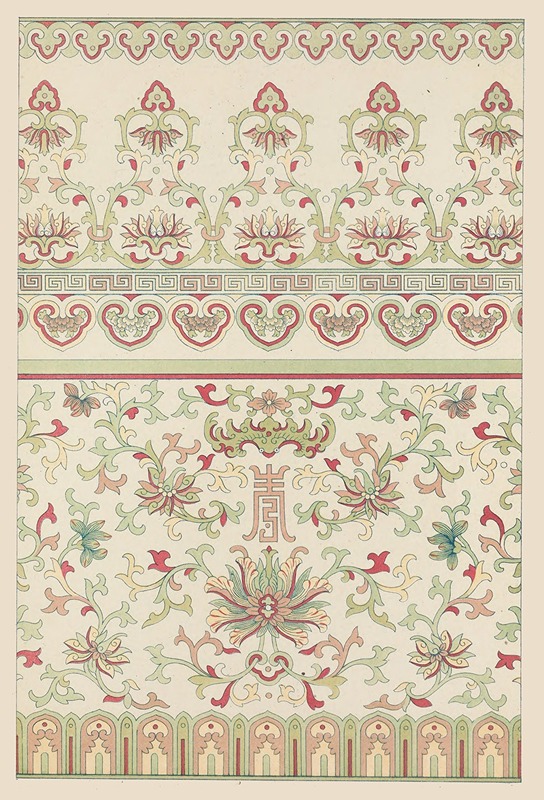
Examples of Chinese ornament, Pl.64
A hand-painted replica of Owen Jones’s masterpiece Examples of Chinese ornament, Pl.64, meticulously crafted by professional artists to capture the true essence of the original. Each piece is created with museum-quality canvas and rare mineral pigments, carefully painted by experienced artists with delicate brushstrokes and rich, layered colors to perfectly recreate the texture of the original artwork. Unlike machine-printed reproductions, this hand-painted version brings the painting to life, infused with the artist’s emotions and skill in every stroke. Whether for personal collection or home decoration, it instantly elevates the artistic atmosphere of any space.
"Examples of Chinese Ornament, Pl.64" is a work by Owen Jones, a prominent British architect and designer known for his influential role in the decorative arts during the 19th century. Jones was a pivotal figure in the development of design theory and is best known for his publication "The Grammar of Ornament," first published in 1856. This comprehensive work is a collection of design patterns and motifs from various cultures around the world, intended to serve as a source of inspiration and guidance for designers and architects.
Plate 64, titled "Examples of Chinese Ornament," is one of the many plates included in "The Grammar of Ornament." This particular plate showcases a variety of decorative motifs and patterns derived from Chinese art and design. The illustrations in Plate 64 reflect the intricate and symbolic nature of Chinese ornamentation, which often includes motifs such as dragons, phoenixes, floral patterns, and geometric designs. These elements are characteristic of traditional Chinese art and are imbued with cultural significance, often representing concepts such as prosperity, longevity, and harmony.
Owen Jones was deeply influenced by his travels and studies of different cultures, and his work aimed to highlight the beauty and sophistication of non-Western design traditions. By including Chinese ornament in his book, Jones sought to broaden the understanding and appreciation of Chinese art among Western audiences. His work played a crucial role in the 19th-century design reform movement, which advocated for the incorporation of diverse artistic influences into Western design practices.
Jones's approach to design was systematic and analytical. He believed that studying the principles underlying various ornamental styles could lead to a more harmonious and aesthetically pleasing design. In "The Grammar of Ornament," he outlined 37 propositions that served as guidelines for creating and evaluating decorative art. These propositions emphasized the importance of form, color, and proportion, and they encouraged designers to draw inspiration from historical and cultural sources while also fostering innovation and creativity.
The inclusion of Chinese ornament in Jones's work reflects the 19th-century fascination with Orientalism and the growing interest in Asian art and culture in Europe. This interest was partly fueled by increased trade and contact between Europe and Asia, which introduced new artistic influences and materials to Western artists and designers.
"Examples of Chinese Ornament, Pl.64" is a testament to Owen Jones's commitment to celebrating the diversity of global design traditions. His work continues to be studied and admired for its contribution to the understanding of decorative arts and its impact on the development of design theory. By documenting and disseminating these ornamental styles, Jones not only preserved a visual record of cultural heritage but also inspired future generations of designers to explore and integrate diverse artistic influences into their work.





